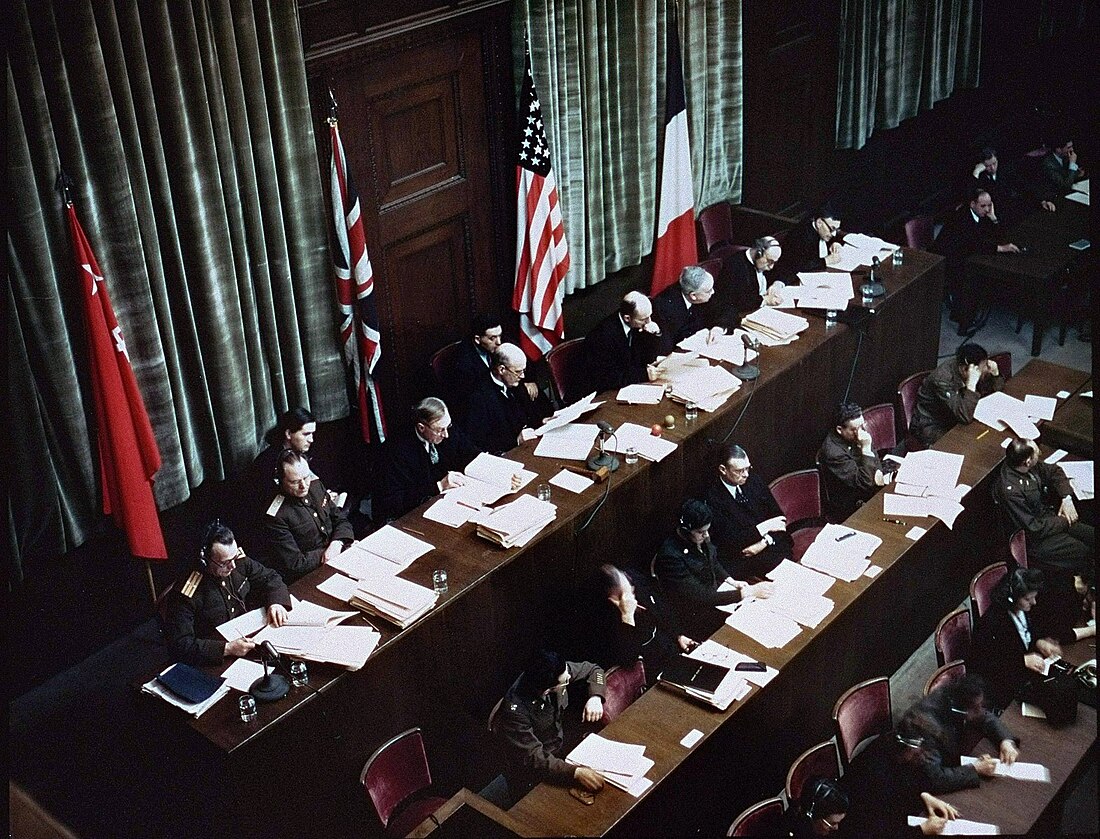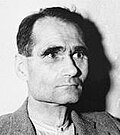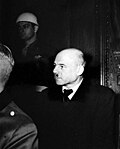Nuremberg Trials
series of military tribunals after World War II, held 1945-1946 From Wikipedia, the free encyclopedia
Remove ads
During World War II, the Nazis, led by Germany, started wars and committed terrible crimes against many countries and people. After the war ended in 1945, countries like the United States, Britain, the Soviet Union, and France decided to hold trials to punish the Nazi leaders who were responsible.

These trials were called the Nuremberg Trials and took place in Nuremberg, Germany. The trials lasted from November 1945 to October 1946. They focused on 22 top Nazi leaders and six organizations. The judges said it was wrong to start wars and cause so much suffering. They also looked at the Holocaust, where the Nazis killed millions of Jewish people and others in horrible ways. The judges called it one of the worst crimes in history.
The Nuremberg Trials weren’t just about punishment. They were also about showing the world what happened during the war and making sure people understood how serious these crimes were. Later, more trials were held to punish others who were involved in the crimes.
These trials were important because they created new rules to prevent such crimes in the future. They also showed that even powerful leaders would face justice if they broke international laws.
Remove ads
The main trial

The International Military Tribunal was opened on October 18, 1945, in the Supreme Court Building in Berlin.
Judge Nikitchenko from the USSR presided over the first session. The prosecution brought criminal charges against 24 major war criminals and six criminal organizations:
- The leadership of the Nazi Party
- The Schutzstaffel, or SS (a Nazi paramilitary organization)
- The Sicherheitsdienst, or SD (the intelligence agency for the SS and the Nazi Party)
- The Gestapo (the Nazi secret police)
- The Sturmabteilung, also called the SA, Storm Troopers, or Brownshirts (the Nazi Party's militia)
- The High Command of the German armed forces (OKW)
The indictments were for:
- Working with other people to commit a crime against peace (legally called "taking part in a conspiracy")
- War crimes
- Crimes against humanity
- Planning, initiating and waging wars of aggression and other crimes against peace
The 24 accused were:
"I" indicted "G" indicted and found guilty "O" Not Charged
"I" indicted "G" indicted and found guilty "O" Not Charged
The death sentences were carried out on 16 October 1946 by hanging using the inefficient American "standard" drop method instead of the long drop.[24][25] The executioner was John C. Woods. The French judges suggested the use of a firing squad for the convicted military officials, as is standard for military courts-martial. However, Biddle and the Soviet judges did not agree. They said that the military officers acted so badly that they did not deserve to be treated as soldiers.
The prisoners sentenced to imprisonment were transferred to Spandau Prison in 1947.
Nuremberg principles is a document created as a result of the trial. It defines what a war crime is.
The medical experiments conducted by German doctors and prosecuted in the so-called Doctors' Trial led to the creation of the Nuremberg Code to control future trials involving human subjects.
Four organisations were charged as being criminal. Only the SS was found guilty. These organisations were found not to be criminal:
- Reichsregierung, (the Reich government or Cabinet)
- Oberkommando and Generalstab der Wehrmacht, (the High Command and General Staff of the Armed Forces)
- Sturmabteilung (the Stormtroopers or "Brownshirts")
Remove ads
Related pages
References
Wikiwand - on
Seamless Wikipedia browsing. On steroids.
Remove ads
























